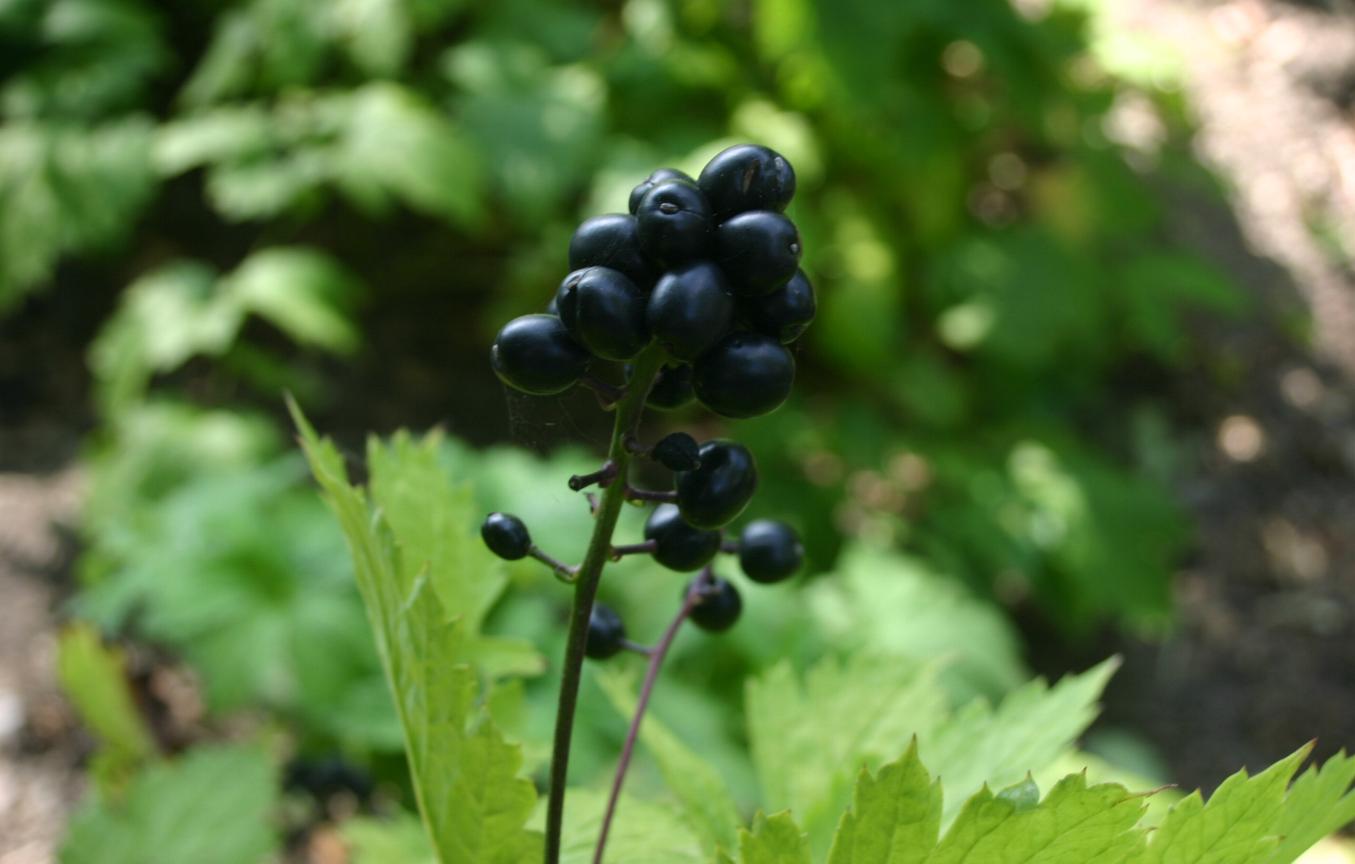Actaea Spicata on:
[Wikipedia]
[Google]
[Amazon]
''Actaea spicata'', the baneberry or herb Christopher, is a species of
 ''Actaea spicata'' was first described by
''Actaea spicata'' was first described by
Flora Europaea: ''Actaea spicata''Nepal Checklist: ''Actaea spicata'' var. ''acuminata''
*
Plants for a Future: ''Actaea spicata''
*Edible and Medicinal plants of the West, Gregory L. Tilford, {{Taxonbar, from=Q157405 spicata Flora of Eastern Europe Flora of tropical Asia Flora of temperate Asia Plants described in 1753 Taxa named by Carl Linnaeus
flowering plant
Flowering plants are plants that bear flowers and fruits, and form the clade Angiospermae (). The term angiosperm is derived from the Ancient Greek, Greek words (; 'container, vessel') and (; 'seed'), meaning that the seeds are enclosed with ...
in the genus '' Actaea'', native from Europe
Europe is a continent located entirely in the Northern Hemisphere and mostly in the Eastern Hemisphere. It is bordered by the Arctic Ocean to the north, the Atlantic Ocean to the west, the Mediterranean Sea to the south, and Asia to the east ...
to western Siberia
Siberia ( ; , ) is an extensive geographical region comprising all of North Asia, from the Ural Mountains in the west to the Pacific Ocean in the east. It has formed a part of the sovereign territory of Russia and its predecessor states ...
and northern Iran
Iran, officially the Islamic Republic of Iran (IRI) and also known as Persia, is a country in West Asia. It borders Iraq to the west, Turkey, Azerbaijan, and Armenia to the northwest, the Caspian Sea to the north, Turkmenistan to the nort ...
. It is often found on limestone edges and in deciduous woodland; key factors are shade, low competition, and a cool, protected root run.
Description
''Actaea spicata'' is aherbaceous
Herbaceous plants are vascular plants that have no persistent woody stems above ground. This broad category of plants includes many perennials, and nearly all annuals and biennials.
Definitions of "herb" and "herbaceous"
The fourth edition of ...
perennial plant
In horticulture, the term perennial (''wikt:per-#Prefix, per-'' + ''wikt:-ennial#Suffix, -ennial'', "through the year") is used to differentiate a plant from shorter-lived annual plant, annuals and biennial plant, biennials. It has thus been d ...
growing up to tall. The basal leaves are large, biternate or bipinnate. The leaflets are more-or-less toothed. The flower
Flowers, also known as blooms and blossoms, are the reproductive structures of flowering plants ( angiosperms). Typically, they are structured in four circular levels, called whorls, around the end of a stalk. These whorls include: calyx, m ...
s are white, with 3–6 petaloid sepals, and are produced in an erect raceme
A raceme () or racemoid is an unbranched, indeterminate growth, indeterminate type of inflorescence bearing flowers having short floral stalks along the shoots that bear the flowers. The oldest flowers grow close to the base and new flowers are ...
. The fruit
In botany, a fruit is the seed-bearing structure in flowering plants (angiosperms) that is formed from the ovary after flowering.
Fruits are the means by which angiosperms disseminate their seeds. Edible fruits in particular have long propaga ...
is a berry
A berry is a small, pulpy, and often edible fruit. Typically, berries are juicy, rounded, brightly colored, sweet, sour or tart, and do not have a stone or pit although many pips or seeds may be present. Common examples of berries in the cul ...
, black when ripe and across. Its fruit persists for an average of 57.5 days, and bears an average of 11.4 seeds per fruit. Fruits average 90.7% water, and their dry weight
Vehicle weight is a measurement of wheeled motor vehicles; either an actual measured weight of the vehicle under defined conditions or a gross weight rating for its weight carrying capacity.
Curb or kerb weight
Curb weight (American English) or k ...
includes 2.4% carbohydrate
A carbohydrate () is a biomolecule composed of carbon (C), hydrogen (H), and oxygen (O) atoms. The typical hydrogen-to-oxygen atomic ratio is 2:1, analogous to that of water, and is represented by the empirical formula (where ''m'' and ''n'' ...
s (possibly the lowest of any European fleshy fruit) and 1.0% lipid
Lipids are a broad group of organic compounds which include fats, waxes, sterols, fat-soluble vitamins (such as vitamins A, D, E and K), monoglycerides, diglycerides, phospholipids, and others. The functions of lipids include storing ...
s.
Taxonomy
Carl Linnaeus
Carl Linnaeus (23 May 1707 – 10 January 1778), also known after ennoblement in 1761 as Carl von Linné,#Blunt, Blunt (2004), p. 171. was a Swedish biologist and physician who formalised binomial nomenclature, the modern system of naming o ...
in 1753. Two varieties
Variety may refer to:
Arts and entertainment Entertainment formats
* Variety (radio)
* Variety show, in theater and television
Films
* ''Variety'' (1925 film), a German silent film directed by Ewald Andre Dupont
* ''Variety'' (1935 film), ...
have been recognized:
*''Actaea spicata'' var. ''spicata''. Europe, northwestern Asia.
*''Actaea spicata'' var. ''acuminata'' (syn. ''A. acuminata''). Pakistan, India and the Himalayas, above 2000 m altitude.
Ecology
Granivorous rodents sometimes remove the fruits, consuming most of the seeds but only a small proportion of the fruit's pulp. As some seeds inevitably escape predation, they also act as seed dispersers.Cultivation
''Actaea spicata'' is cultivated as an ornamental plant. It is toxic by ingestion, and is also an irritant, so requires careful handling. It has been used as a homeopathic remedy forarthritis
Arthritis is a general medical term used to describe a disorder that affects joints. Symptoms generally include joint pain and stiffness. Other symptoms may include redness, warmth, Joint effusion, swelling, and decreased range of motion of ...
and joint pain.
References
Bibliography
* *External links
Flora Europaea: ''Actaea spicata''
*
Plants for a Future: ''Actaea spicata''
*Edible and Medicinal plants of the West, Gregory L. Tilford, {{Taxonbar, from=Q157405 spicata Flora of Eastern Europe Flora of tropical Asia Flora of temperate Asia Plants described in 1753 Taxa named by Carl Linnaeus